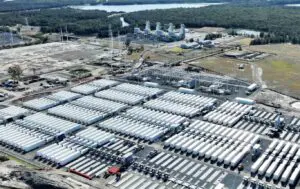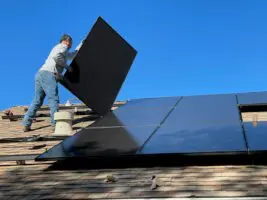A new study by solar experts at three leading Australian institutions has concluded that Australia could host as much as 179 gigawatts of rooftop solar, more than 20 times its current capacity of just over 8 gigawatts.
The joint study by the Institute for Sustainable Futures, the School of Photovoltaic and Renewable Energy Engineering (SPREE) at the University of New South Wales (UNSW), and the Australian Photovoltaic Institute, says the combined annual output from rooftop solar could be as high as 245 terrawatt-hours, more than the current total grid consumption of around 220TWh.
The report, How much Rooftop Solar can be Installed in Australia?, was prepared for the Clean Energy Finance Corporation and the Property Council of Australia, and says that around half of the unused potential for rooftop solar is in residential zones, with primary and rural production zones and commercial and industrial zones making up the rest.
“Australia is currently using less than 5 per cent of the potential capacity for rooftop solar,” the authors say in the report.
“Our study does not suggest Australia could or should source all its power from rooftop solar.
“But noting these caveats (potential for shading and structural integrity issues), our study does indicate that even with the strong recent growth, Australia has only just scratched the surface of the potential.
“There are still many barriers to rooftop solar which if they were to be addressed by governments, investors and communities could unlock a large volume of clean energy.”
The report was delivered at the opening of the Australian Energy Week in Melbourne, and came as experts from McKinsey said cheap wind and solar could underpin a widespread “electrification” of Australia’s energy needs, resulting in renewables replacing not just coal in the grid, but also oil and gas in transport and industry,
The head of the Australian Energy Market Operator, Audrey Zibelman, also told the conference that the uptake of rooftop solar – currently being installed at record rates of around 2GW per year – was likely to accelerate. AEMO has canvassed potential installations of up to 56GW as part of its 20-year planning blueprint.
The solar report notes how the growth of solar power is already reshaping the energy landscape in Australia – even though it now accounts for little more than 5 per cent of total generation.
NSW has the highest rooftop solar potential in the country (49GW), with the western suburbs having the greatest potential for rooftop solar, led by the Blacktown and Canterbury-Bankstown, in Sydney.
Victoria has the second highest potential in Australia (45GW), focused on the outer urban areas around Melbourne, and Greater Bendigo and Ballarat, along with Greater Shepparton and Mildura in regional areas.
Queensland has the third highest total rooftop solar potential (37GW), followed by South and Western Australia (23GW).
It should be noted that W.A. has a grid with demand rated at around 4GW, so it is unlikely to be able to absorb that much rooftop solar – unless, of course, as McKinsey suggests, the low cost of renewables results in widespread electrification of all energy. Even then, it will be a tight squeeze.
Note: Updates original version which got numbers back to front on current installations: so it now reads 8GW versus 2GW, and the forecast potential is 20 times current capacity versus 80 times.










